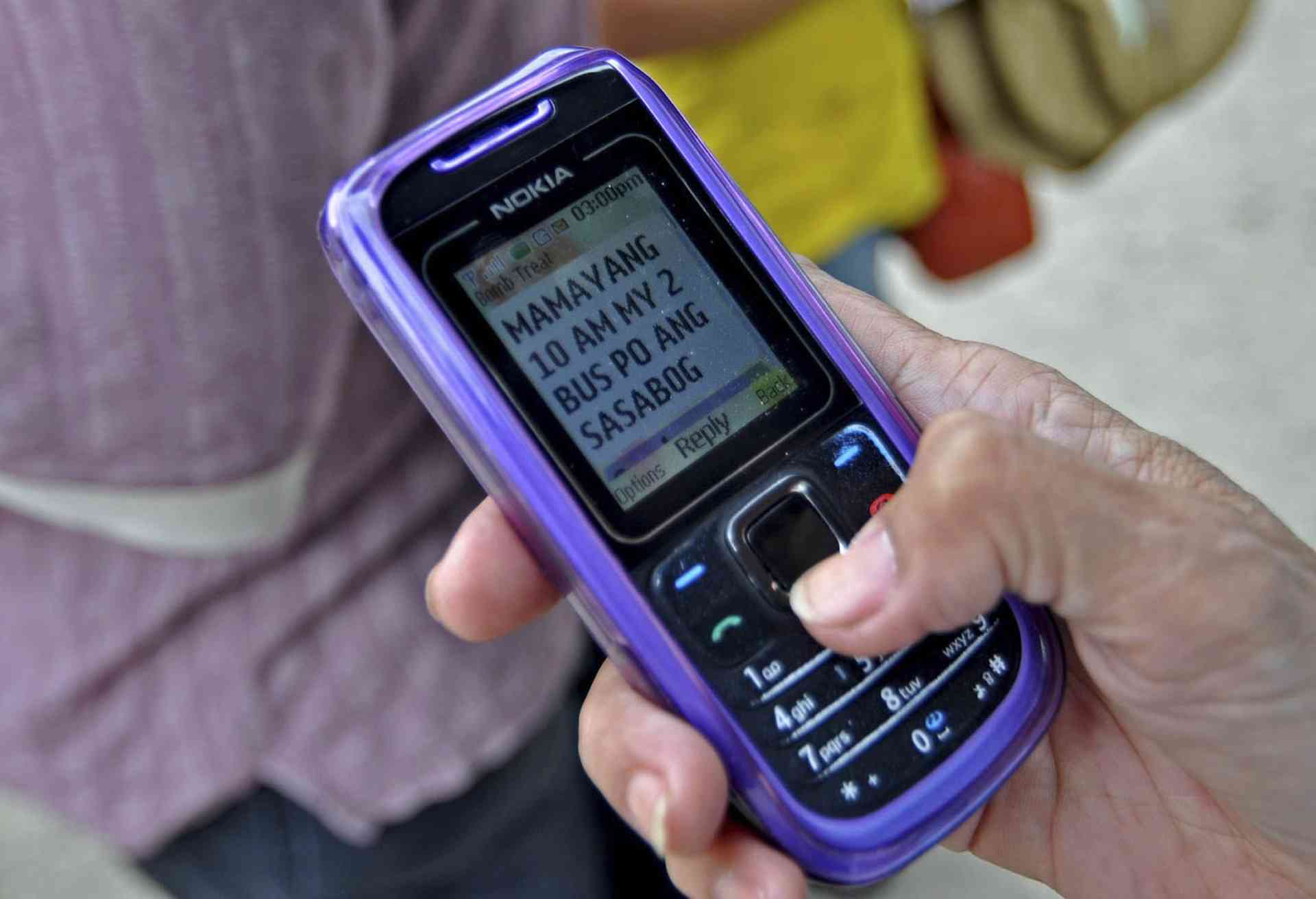On October 2, Joanne Lourdes Reyes, a 20-year-old information technology student of the University of Sto. Tomas (UST), went to the Far Eastern University (FEU) along Morayta in Manila for what she thought would be a pleasant experience.
Her friend, Rocel Armine de Mesa, an FEU student, had invited her to watch the awarding rites of a filmfest. De Mesa was part of the event and wanted her to share the happy occasion.
Reyes recalled that at around 6 p.m., while she was walking along the corridor of FEU’s science building, at least five female FEU students in nursing uniforms confronted her, asking what was she doing there.
Before she could answer, Reyes felt a sharp stinging pain on her face. Somebody had attacked her with what seemed to her was pepper spray or tear gas.
Then she felt someone stab her in the stomach and in the back. Friends who were with her at that time were similarly distracted by the spray and could not immediately come to her rescue.
Wounded and bleeding, Reyes was taken to the Chinese General Hospital where she had to undergo surgery on her small intestine as it was punctured by the blade that went through her abdomen. She also took five wounds in the back and one at the back of her head.
The UST student has been declared out of danger, with one of her five female assailants charged with frustrated murder. (As of press time, three more suspects have been identified and similarly charged in court.)
The first suspect was identified as Ma. Christine Acosta, 20, a nursing student of FEU. Acosta was identified after the police showed Reyes several photos of nursing students from the FEU database.
Just over a week after that FEU stabbing incident, another student became a casualty of yet another knife attack inside a Manila campus.
This time, the crime scene was Adamson University in San Marcelino, Manila.
Like Reyes, the Adamson casualty was an IT student. Kevin Roi Castro, 21, of Tondo, Manila, was attacked on Oct. 10 by at least four fellow students inside the campus while waiting for their professor. Castro claimed he was being bullied when one of the suspects suddenly pulled out a knife and stabbed him.
He sustained two stab wounds on his left arm but was declared out of danger at the San Juan de Dios Hospital and discharged the following day.
Homicide charges were likewise filed against the suspects whom police have identified as John Francis Gelones, also known as Juris, 20; Mark Raven Sallao, 18; Don Lawrence Hapal and Jem Alcid.
The back-to-back knife attacks on the school grounds of two of Manila’s biggest schools have raised concerns about the security of the city’s university campuses.
“Students should be assured of their safety inside the school grounds because they are paying for it,” Julito Vitriolo, Commission on Higher Education (CHEd) executive director, said in response to the recent incidence of violence involving students inside the campus.
Condemning the “senseless violence” in school premises where a student is entitled to feel safe, CHEd asked school authorities to do their own investigation apart from the police probe, and refine their security systems.
The CHEd official stressed that campus security should still be among the top priority of private universities.
“Looking at their earnings, (we are convinced that) stricter security measures (like metal detectors, spy cameras) to deter these incidents should not be considered unaffordable,” Vitriolo said.
Indeed, students pay from P25,000 to P40,000 a semester for tuition and miscellaneous fees in these two schools.
The culture of random violence that has lately sprung in school campuses and led to several high-profile instances of bullying-not to mention hazing deaths-has also come into focus.
Reyes, for instance, still remains clueless weeks after her stabbing on why she had been targeted. She told probers that she only knew that at that time she was wearing a UST engineering shirt while her attackers wore nursing uniforms.
This detail sparked unverified rumors that the FEU students ganged up on her because UST and FEU were basketball rivals in this year’s closely-fought UAAP games.
Senior Inspector Antonio Naag, commander of the University-belt police station, said even the police face a blank wall on the possible motive behind the attack.
“It could be a sorority war since the victim is a member of the Tau Gamma while the suspect (Acosta) is a member of a sorority affiliated with APO (Alpha Phi Omega),” he said.
Naag added in Filipino: “We couldn’t understand it. There must be a possible motive, a previous incident, that the victim isn’t telling us.”
The female suspect was invited by the police for questioning, but as of this writing, she was yet to come forward to give her statement.
The police tried verifying the incident through the CCTV footage of FEU, but the shots were too far to be clear. “(The) footage was taken from the other end of the corridor where the attack took place. (All) you could see was the commotion,” Naag said.
The victim’s mother isn’t about to settle for that explanation, however.
Reyes’s mom, Arlene Concepcion, 45, a resident of Imus, Cavite, has passed the blame on to the FEU administration for the security lapses on campus and has asked Manila Mayor Alfredo Lim to hold the school accountable.
“I don’t want this to happen to other students, so I’m pointing out the lapses. Why is there a deadly weapon inside the campus?” Concepcion asked in a previous Philippine Daily Inquirer report.
Reyes’ case was not the first crime recorded within the FEU campus this year.
On Aug. 23 at around 3 p.m., Daniel Imir, 18, a student taking up Hotel and Restaurant management at FEU was shot and wounded inside the campus.
Case investigator SPO3 Genesis Aliling said the suspects were two FEU students, who were also taking HRM subjects and who had managed to slip a silver .22 magnum Colt pistol inside the campus.
Wounded in the abdomen, Imir was taken to the hospital but was discharged the following day.
The suspects, Jhonel Salas, 20, and Jhon Banayos, 20 were arrested and charged with frustrated homicide. The police also lodged an illegal gun possession complaint against them after learning that the pistol was not licensed.
The two are out on bail but had been placed on preventive suspension by the FEU school officials.
Asked on the motive behind the shooting, Aliling said: “Nagkatitigan lang (A bad stare).” He said frat wars was among the angles that the police were looking into.
But as to how the two managed to bring a gun inside the campus, Aliling shrugged off the lapse and said it should be FEU’s concern.
Over at Adamson, school officials described the recent stabbing incident as “an isolated case” and placed the four suspects on preventive suspension.
Lawyer Jan Nelin Navallasca, Adamson’s director for security and safety, said the university has also begun conducting its own investigation.
“But we want to assure you that this is an isolated incident,” he told the Inquirer. “We have 16,000 students and it would be impossible to have a 100-percent campus security.”
Navallasca added that after the incident, school officials have beefed up Adamson’s campus security, and enhanced their CCTV systems and the security guards’ visibility.
“Adamson is safe. It is just unfortunate that this incident has damaged our standing in the community,” he said.
Albert Cabasada III, FEU director for admissions and external affairs, made a similar disclaimer, saying that a perfect campus security system is next to impossible.
“These past incidents are not a reflection on FEU. Our security measures have always been strict to begin with,” he said.
Nevertheless, after the stabbing of the UST student inside the campus, he said additional guards have been assigned in the campus. The CCTV cameras have also been doubled to cover the entire university, he added.
“Campus security, which is a basic requirement for CHEd accreditation, (has been) put (to a) test. But FEU will pass this easily because we provide more (security) than is required,” Cabasada III said.
He rued that violence among the youth has spread beyond the university belt. “What we should be looking into is why our youth are becoming engaged in such,” he added.
Cabasada explained that the school’s objective is first and foremost the learning experience of its students.
“We are not really living in a Big Brother kind of world where everyone is closely monitored. The students have rights too. It’s a delicate balance (between security and rights) that we should also consider,” he said.













































